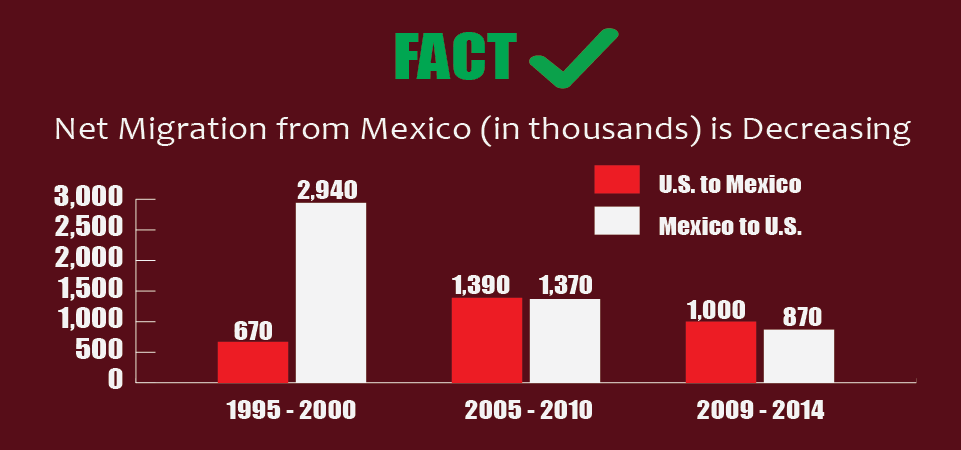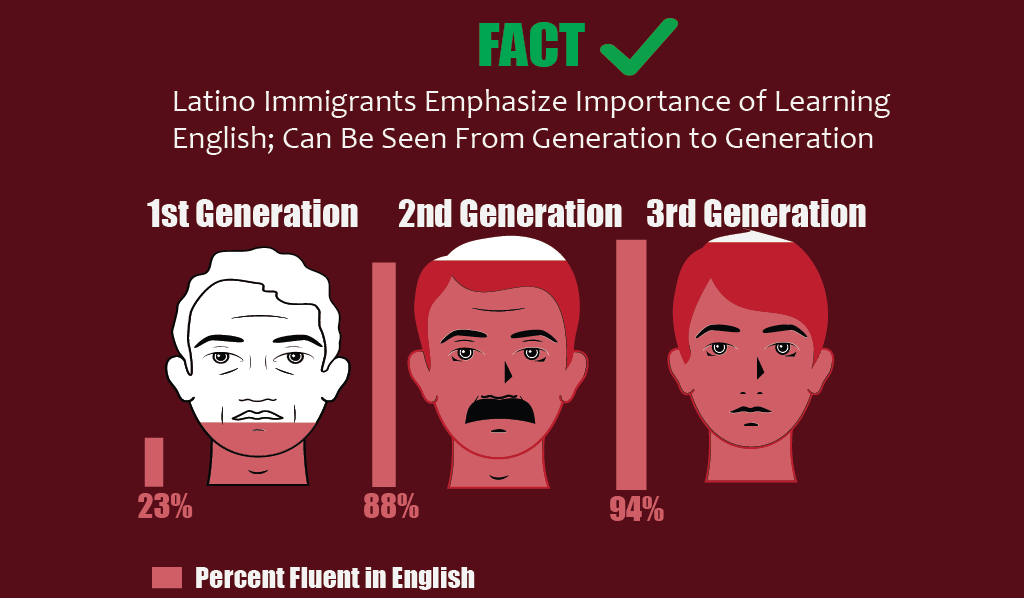#LearntheTruth about Mexican Immigration Slideshow
Photo/Audio slideshow to raise awareness about the myths and facts about Mexican immigration
#LearntheTruth about Mexican Immigration MOS
https://www.youtube.com/watch?v=FCDyKqBLOyw&feature=youtu.be
Learning the truth about Mexican immigration with USC Students
#LearntheTruth about Mexican Immigration Written Article
Mexican immigration and certain immigration policies have been a topic heavily debated by many. Throughout the year, the topic of Mexican immigration has gained popularity due to the presidential election and the statements of a particular candidate. This rise of popularity in the topic of Mexican immigration has caused a lot of false information and statistics to circulate around the media and by word of mouth. With these false statistics and data being repeated over and over again, many statements have turned into common believed myths and have created many negative stereotypes about Mexican immigrants.
How is it that false information and statistics can be perceived as true by so many? The answer lies within the way people navigate media. The Oxford Dictionary released the “Word of the Year,” and it turns out the word of the year is “post-truth,” which is defined as “relating to or denoting circumstances in which objective facts are less influential in shaping public opinion than appeals to emotion and personal belief.” When determining which word will become “Word of the Year,” according to Katherine Martin, head of U.S. Dictionaries for Oxford University Press, “We choose words that are going to highlight the interplay between our words and our culture.” With a word such as “post-truth” being chosen to define our culture, it shows how people will accept certain statements and data without researching whether or not it is indeed factual. This became very apparent after the results of the presidential election. Based on the false statements that were made during the election by Donald Trump, now that he is president elect, many people will think that all the myths of Mexican immigration were indeed true. Many myths of Mexican immigration are still being spread throughout society and it is time to break the myths and stereotypes and learn the truth about Mexican immigration in a post-truth world.
If one has been paying attention to the news during the presidential announcements, then he/she would have heard many false statements about Mexican immigrants. One of the most popular ones made by Donald Trump is that Mexican immigrants are all criminals and rapists, stating “When Mexico sends its people, they’re not sending their best… they’re sending people that have lots of problems, and they’re bringing drugs. They’re bringing crime. They’re rapists.” When Donald Trump was asked to apologize for these false statements and for stereotyping Mexican immigrants he stated, “I can never apologize for the truth. I don’t mind apologizing for things. But I can’t apologize for the truth. I said tremendous crime is coming across. Everybody knows that’s true. And it’s happening all the time.” This is a perfect example of why the word of the year is “post-truth.” Donald Trump is saying things that are false, however he is insisting that they are true without even researching the subject matter.
The statement of Mexican immigrants being criminals and rapists was proven to be false in a study here: https://www.americanimmigrationcouncil.org/research/criminalization-immigration-united-states. The report states that, “immigrants are less likely to commit serious crimes or be behind bars than the native-born…in other words, the overwhelming majority of immigrants are not ‘criminals’ by any commonly accepted definition of the term.” The report then addresses the issue of stereotyping Mexican immigrants stating, “unfortunately, immigration policy is frequently shaped more by fear and stereotype than by empirical evidence.” This is just one example of the many myths and stereotypes of Mexican immigrants that are seen as true by many who do not take the time to research the truth.
There are many other myths and stereotypes about Mexican migration into the U.S. that was dispelled through research. These myths can be seen in this infographic:
There are three big myths and stereotypes about Mexican immigration. The three myths are Mexican immigration into the U.S. keeps increasing, Latino immigrants do not want to learn English, and that increasing border security would solve the problem.
The first common myth that was dispelled was that Mexican immigration into the U.S. keeps increasing. The truth about this myth, which can be seen from the top-third of the infographic, is that the net migration is decreasing. According to a research article here: http://www.pewresearch.org/fact-tank/2016/02/11/mexico-and-immigration-to-us/, “more Mexicans left than came to U.S. since the end of the Great Recession. Between 2009 and 2014, 870,000 Mexican nationals left Mexico to come to the U.S., down from the 2.9 million who left Mexico for the U.S. between 1995 and 2000.” The infographic:
helps to dispel the myth through visual proof. As one can see, from 1995 to 2000, there was a great deal of Mexicans migrating to the U.S. However over time this number decreased and from 2009 to 2014 more were traveling from the U.S. to Mexico, disproving the myth that Mexican immigration into the U.S. keeps increasing.
The second common myth that was dispelled was that Latino immigrants do not want to learn English. The truth about this myth is that Latino immigrants emphasize the importance of learning English and that English proficiency increases from generation to generation. According to a research article here: http://www.pewhispanic.org/2007/11/29/english-usage-among-hispanics-in-the-united-states/, “The surveys show that fewer than one-in-four (23%) Latino immigrants reports being able to speak English very well. However, fully 88% of their U.S.-born adult children report that they speak English very well. Among later generation of Hispanic adults, the figure rises to 94%. Reading ability in English shows a similar trend.”
According to another research article here: https://www.aclu.org/other/immigration-myths-and-facts, “While many first-generation Latino immigrants are unable to speak English…studies show that the number rises dramatically for each subsequent generation…Latinos believe that they need to learn English in order to succeed in the United States, and believe they will be discriminated against if they don’t.” The infographic:
helps put the statistics into a visual perspective. As one can see, from generation to generation, the percentage of fluency in English increases drastically, proving that the myth of Latino immigrants not knowing and wanting to learn English false.
The third common and most popular myth that was dispelled is that increasing border security and building a wall would solve the problem and stop immigrants from coming into the United States. Donald Trump has stated multiple times that he will build a wall, such as in this video: https://www.youtube.com/watch?v=-yfIxBjOw3o. The idea of building a wall to stop people from migrating into the country is an elementary idea that would never work and is completely unnecessary. First off, almost half of Mexican immigrants who come here that are considered “illegal,” came to the U.S. on a legal visa and just overstayed their visa. According to an article by NPR:http://www.npr.org/templates/story/story.php?storyId=5485917, “in a recent study, 45 percent of illegal immigrants came here on a legal visa, and then overstayed that visa.” This statistic shows that increasing border security and building a wall would be unnecessary. Increasing border security would also be very expensive and our country cannot afford to pay for it. In a Government Accountability Office report here: http://gao.gov/assets/100/95951.pdf, it states that one mile of border fencing costs about $3 million. The infographic shows how much it would cost:
The border between U.S. and Mexico is about 2000 miles. This would mean that if a fence wall were to be built between the two countries, it would cost around $6 billion. Now this is only a fence, a wall would cost much more to build than a fence. Increasing border security and building a wall would not solve the problem. It is only a myth that is unrealistic and unnecessary.
In a “post-truth” world it is now more important to fact-check and do research on controversial topics. Understanding Mexican immigration requires empathy and is a topic that has been heavily debated. It is important to dispel myths about Mexican immigration because these false statements have turned into common believed myths and have created many negative stereotypes about Mexican immigrants. #learnthetruth
Upset Victory
http://www.reuters.com/article/us-usa-trump-immigration-idUSKBN13B05C
Trump is now in office. He is already planning to deport criminal immigrants and getting rid of DACA.
Myths and Stereotypes About Hispanics and Immigration
http://racerelations.about.com/od/diversitymatters/a/Four-Myths-About-Latinos-And-Immigration.htm
An article trying to dispel the myths of Hispanics and immigration.
Breaking the Stereotype
A Mexican Immigrant talks about his experiences here in the United States and the struggles of facing racial/ethnic stereotypes.
The President of Mexico’s Thoughts on the Wall
http://www.cnn.com/2016/07/10/world/mexico-president-fareed-interview/
Mexico’s president talks about the Wall and what he thinks of it.










